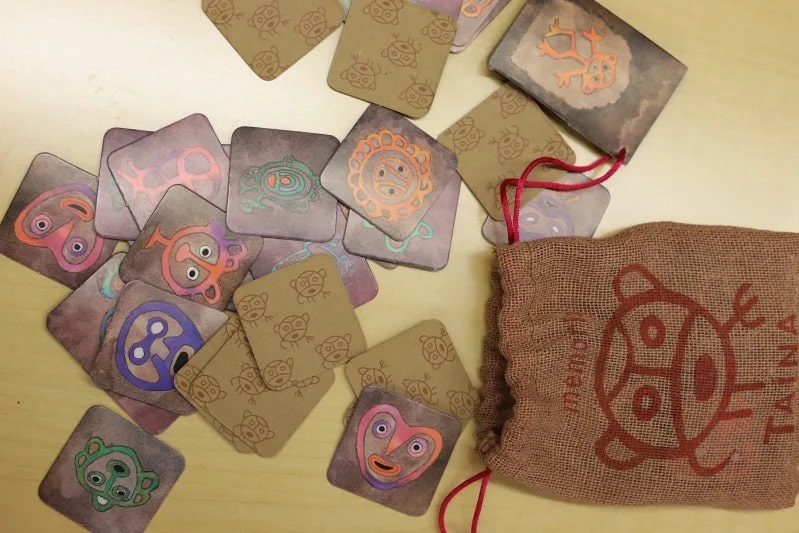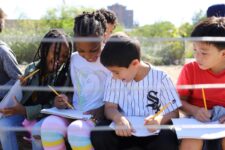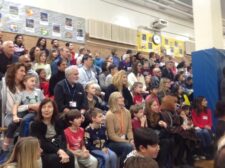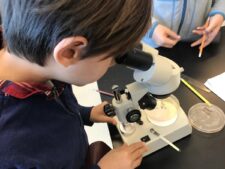In mid-October, Fieldston Lower School Spanish Teacher Monica Mella led her 1st Graders through a lesson on dates and months. She asked them what holidays fall in October. Most offered Halloween, but one student asked about the day off from school that had happened that very week. Wasn’t it a holiday, too? Didn’t it have a different name?
Mella saw an opportunity for a real discussion centered around Indigenous Peoples’ Day — also known as Columbus Day. First on the agenda: familiarize her students with the true version of events.
You probably learned a version of Christopher Columbus’ story similar to what Mella learned growing up in Spain. “He had three ships: la Pinta, la Niña, and la Santa Maria,” she says, “and he arrived at the New World and discovered America, and it was a wonderful thing. That’s all we were taught in school. Nothing else.”
Mella’s 1st Graders went deeper into the complicated history of the arrival of Europeans in what’s now Haiti and the Dominican Republic, as well as its aftermath. Mella read Jane Yolen’s Encounter to her students, a book that details Columbus’ arrival through the perspective of a young Taíno boy whose dreams warn his community not to welcome the explorers — yet his premonition is futile against the Taínos’ custom of welcoming strangers. While Mella didn’t go into detail about the brutality, she was clear that the Europeans killed most of the Taíno people and that the surviving population was decimated by smallpox over the next few years.

The students were angry. They were also quick to reject any suggestion that Columbus and company discovered new land.
But rather than simply presenting the Taíno people in relation to Columbus, Mella educated her students about Taíno culture: examinations of symbols that referred to deities, water, and fertility, as well as customs that stunned the students. For example, to ensure that everyone in the community had a seat at the table, the Taínos adopted the practice of passing a talking stick and mandating that every single person offer an opinion. The idea that each person would be given a chance to contribute without interruption was entirely novel to the students, who had trouble conceiving of a world where everyone listens.

“This happened more than 500 years ago, but everything is relevant today. You cannot change history but you can understand what really happened,” Mella told her students.
It’s an introduction to an education that focuses on confronting the realities that have shaped today’s inequity, and one that consciously rejects a version of history told only by those with power. As faculty at the Ethical Culture Fieldston School continue to assess their curricula through a lens of inclusion, it’s critical that these lessons start early.
A history lesson like this breeds connections to today’s world, and Mella capitalized on those links. “I asked my students, ‘Why do you think that in Central America, South America, Mexico, they speak Spanish?’ Do you think they woke up one day and said, ‘I want to speak Spanish?’” The students were confused at first, until Mella filled in the story: Spanish was brought to the Americas by colonizers.
This led to a discussion about Spanish as a diverse set of regional accents, which Mella explained are similar to region differences in American English. When languages are presented as monoliths, entire cultures are flattened, and this more nuanced education is a conscious effort across language instruction to dispel that way of thinking.
Finally, students drew connections between Columbus and American imperialism. When Columbus arrived in Haiti, Mella told her students, the first thing he did was to plant a Spanish flag. “That’s terrible!” the students protested. Mella pointed out that the very same image can be seen in the American moon landing.
When the students enter 3rd Grade in two years, they will continue this conversation with lessons on American colonialism and peoples indigenous to North America. “I just plant the seed in there. They’re young, but still,” Mella says, “I think that it is very important to start understanding what really happened and a different perspective.” With that gained perspective, students will begin thinking critically about history, consequences, and power — and take that knowledge with them as they engage with the world around them.



